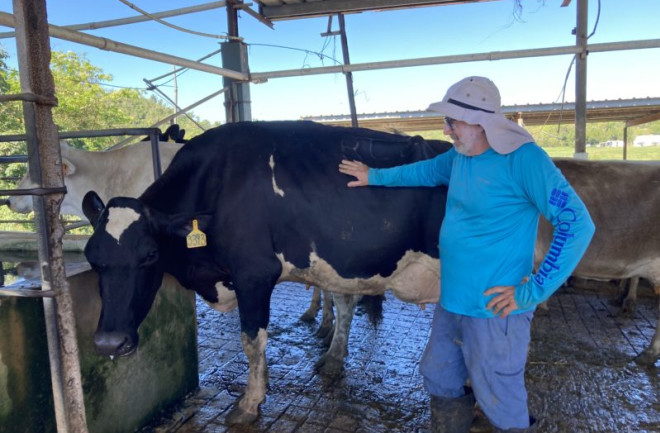At Vaqueria El Remanso, a small dairy farm west of San Juan, Puerto Rico, the cows are different — they have a freshly shaven, suave look. Their short hair is the result of a natural mutation known as “slick,” which Rafael López-López, who runs El Remanso, has been breeding into his cows for decades.
“In hot, humid conditions, the slick cows have an advantage,” López-López said on a scorching spring morning, walking among his herd in the shade of the milking barn. The genetic mutation that gives slick cows a shorter coat and more active sweat glands helps them maintain a healthy body temperature — an asset on a heating planet.
Cows are most comfortable in temperatures between 41 and 77 degrees Fahrenheit, which means livestock around the world are struggling to cope with hotter and longer summers. Over the span of just two hot, humid days of June 2022, an estimated 10,000 cows died in Kansas. Experts say it will only get worse.

